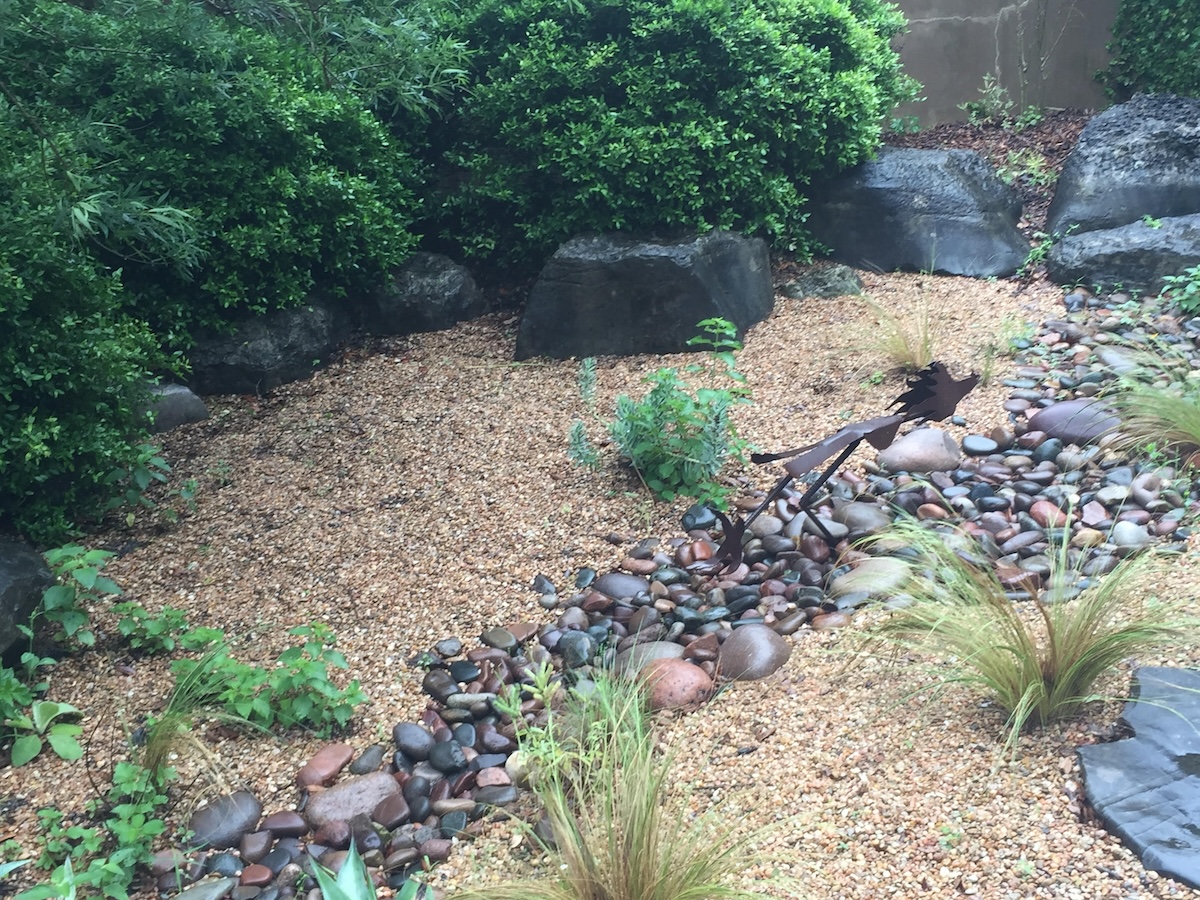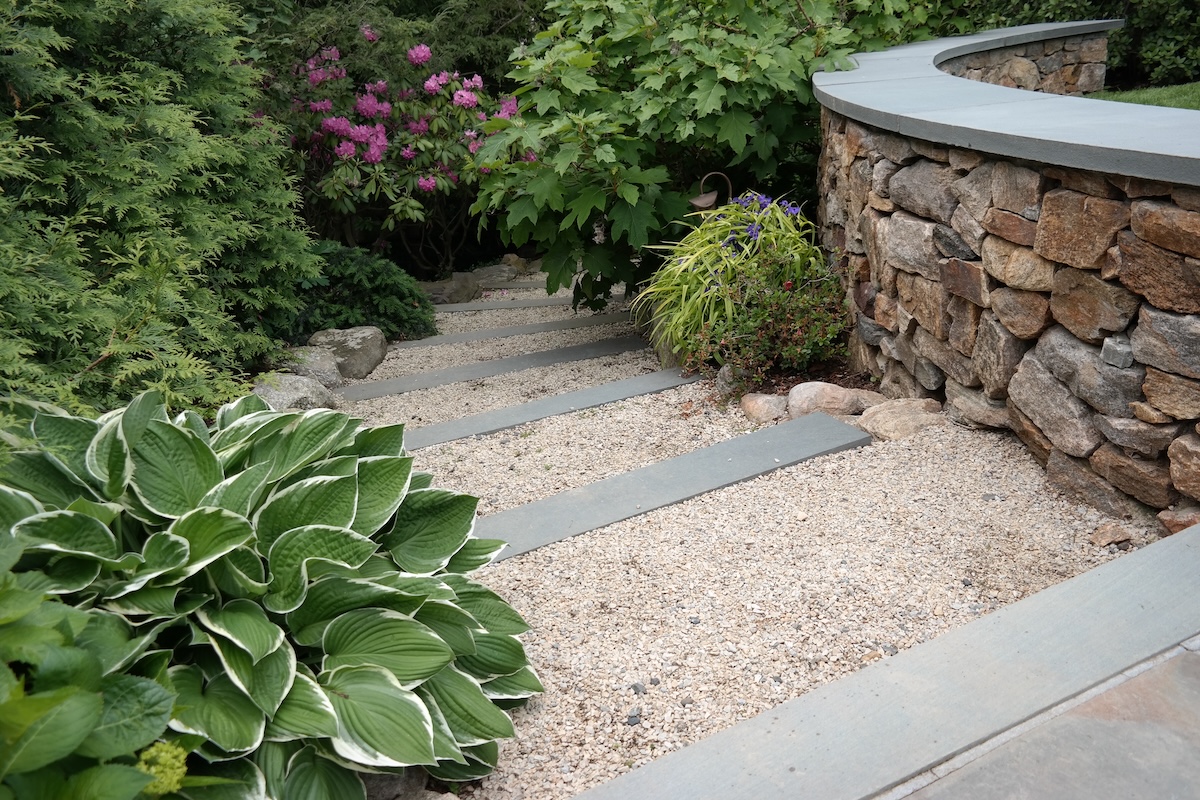

We may earn revenue from the products available on this page and participate in affiliate programs. Learn More ›
Hardscaping, or the use of non-plant materials like brick, stone, gravel, and concrete, has its place in any landscape. Patios, walkways, steps, and pool decks serve important functions in outdoor living and landscape design. But while it might seem easier to fill your yard with concrete and gravel instead of plants that need some care, think about the drawbacks of overdoing hardscaping.
“When you do use hardscape, do it in a very thoughtful manner,” says Jan Johnsen, a landscape designer in Mount Kisco, New York, and author of The Spirit of Stone and other gardening books. This includes retaining the function of hardscape elements, but with balance and in support of natural resources. Consider the drawbacks of over-hardscaping, including local zoning regulations, and how best to incorporate sustainable hardscaping into your yard.
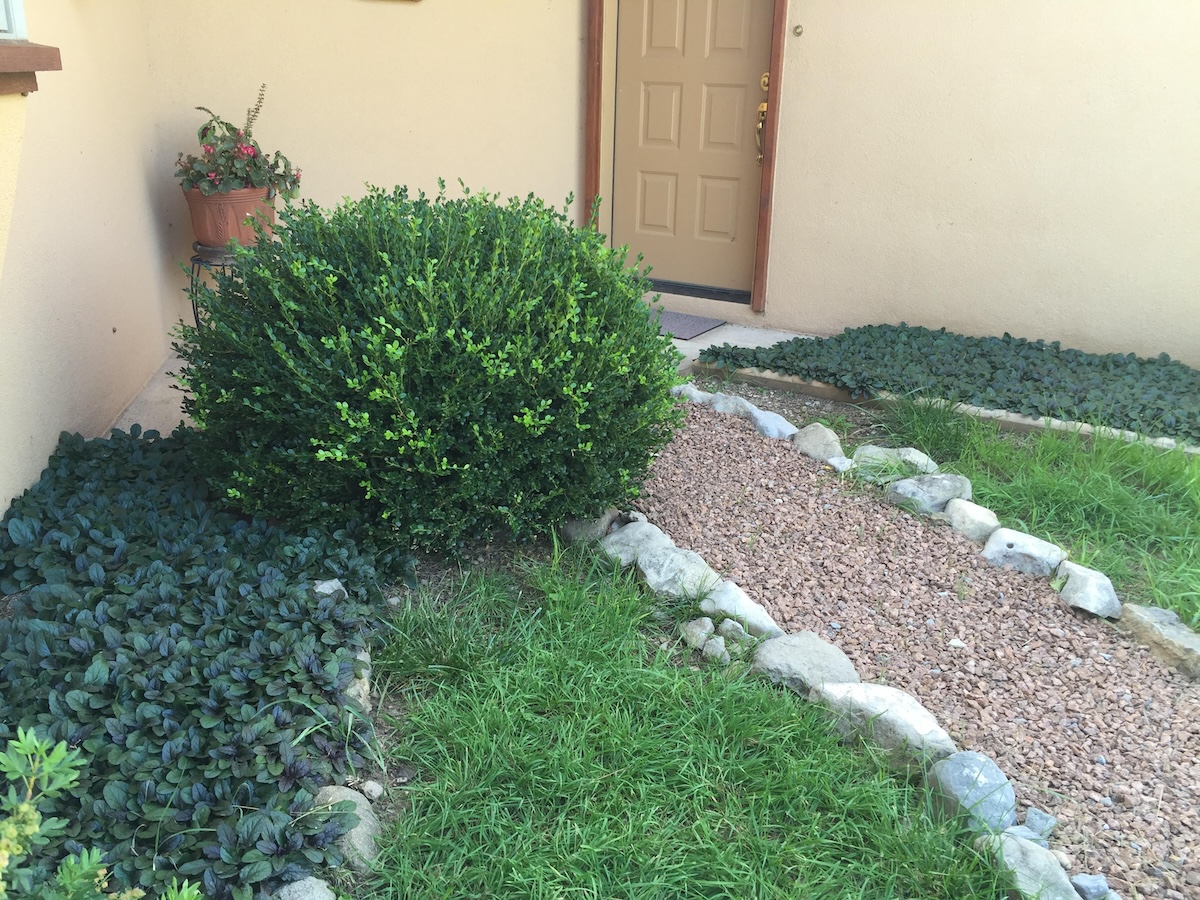
Hardscaping affects drainage.
Concrete patios and driveways are generally not water permeable. “With too much hardscape, drainage can become an issue, where water has nowhere to infiltrate the ground,” says Lee Miller, a gardening book author and landscape designer in Sayville, New York. “This in turn can lead to increased stormwater runoff,” she says. According to Miller and Johnsen, the water running off hard surfaces gets channeled into pipes or drains, and often into local rivers.
The water runoff is “messing up the whole natural cycle,” says Johnsen. In nature, rainwater can permeate the ground, which lessens flooding, but also returns the fallen rain to the groundwater below. If an area gets heavy rain, heavy hardscaping adds to flooding risk, whereas in the dry Southwest and other areas with low precipitation, impermeable surfaces add to waste of a precious resource.
Your municipality may limit lot coverage.
These concerns about the ecological effects of wasted water and damage from flooding have led many municipalities to adopt lot coverage regulations in their zoning laws, where “towns limit how much you can cover your land,” says Johnsen. Generally, towns set the percentage of a total property covered by driveways, walkways, structures, gravel, pavers, and other hardscape elements to about 15 to 30 percent of the lot’s total square footage, depending on the town. Be sure to check local zoning laws when adding hardscaping, especially if you plan to replace the lawn with hardscape materials.
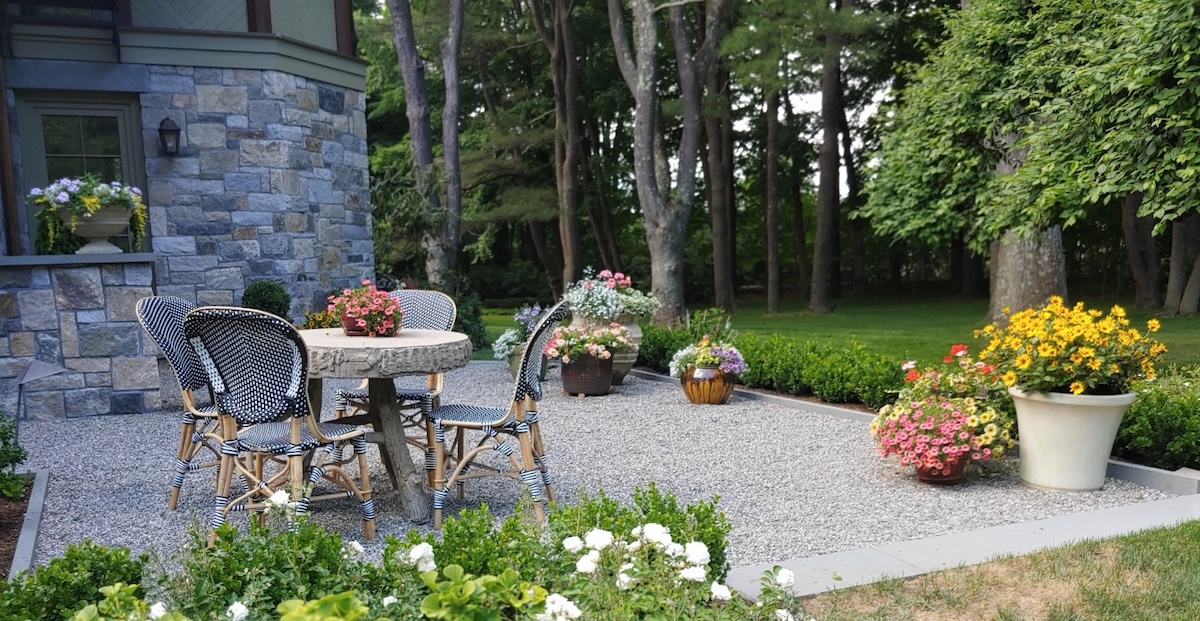
Too much hardscaping adds to heat island effects.
Another environmental impact of heavy hardscaping, as well as hardscaping placement and material selection, is the heat island effect. As with the increased thermal mass in cities with paving and concrete, surrounding a home with concrete and other heat-absorbing materials can add to the high summer temperatures around a home. This can affect indoor and outdoor comfort, increase home energy costs, and add to urban and global warming.
When xeriscaping, some homeowners turn to all-gravel lawns, which does save on water. But pure gravel, especially up against sunny sides of a home in dry and hot areas, can add to the heat effect. Replacing turf with gravel around existing trees and shrubs affects those plants’ microclimate. In other words, reflected heat from gravel increases the temperature around the plants, and tree roots might receive too little water.
If replacing all or most of a lawn with hardscaping, be aware of existing plants, the sun’s path in summer, and where best to place hardscaping to avoid making outdoor and indoor spaces hotter. Place plants where they can get natural shade or water runoff from the home. Also be sure to check those local lot coverage regulations.
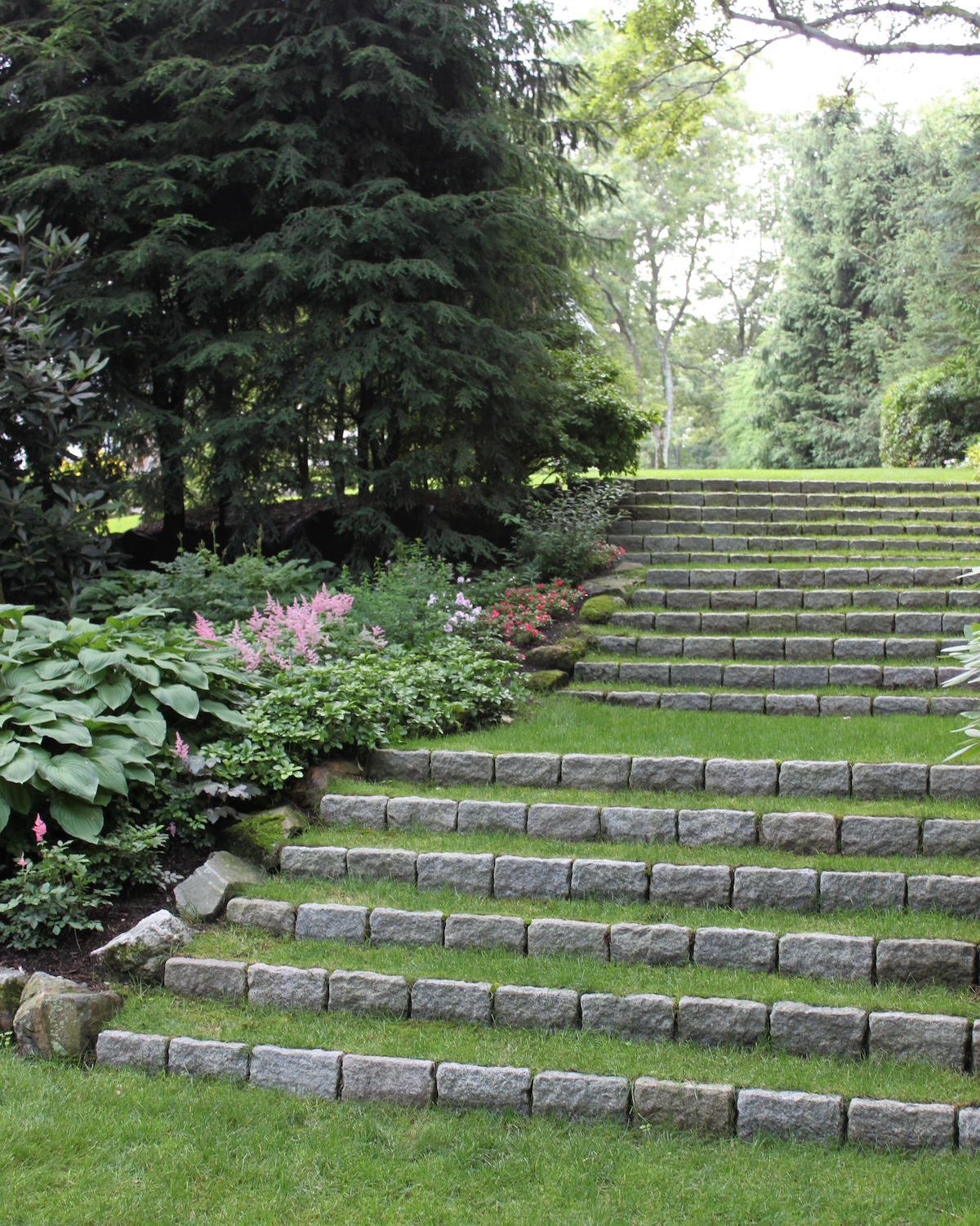
A high ratio of hardscaping affects landscape harmony and curb appeal.
“A heavily hardscaped area can lead to a more sterile and uninviting look with fewer plantings and lack of biodiversity,” says Miller. This can even affect curb appeal and resale value. “You don’t have to do a wholesale hardscape covering” to create outdoor living spaces and paths, Johnson adds. Both designers say that homeowners can achieve the function of hardscape structures without sacrificing appearance or sustainability by taking a mindful approach.
How can you limit or balance hardscaping?
“An appropriate balance between landscape and turf depends on what function the homeowner is looking to achieve, type of climate, and amount of space available,” says Miller. Consider what landscape elements to use for play areas, foot traffic, and outdoor entertaining, for example. Follow these tips for a more natural and balanced design:
- Be mindful of the size of hardscape elements. If you want a paved walk, for example, you don’t necessarily have to make it wide or solid, says Johnsen. Use stepping stones with plants like low-growing ground covers between them. “So you’re limiting the hardscape, but getting the job done—a place for your foot to go,” she says.
- Mix in turf or groundcovers. “Approximately 20 to 30 percent of a typical property is occupied by turf grass,” says Miller. You can limit water-using turf to play areas or near the sunny side of the house, but retain enough to maintain some balance. Miller says ground covers also are becoming more popular as a turf alternative. Opt for native turf and plants for easier maintenance and lower water use.
- Likewise, Johnsen designs steps with grass treads, saving hardscaping materials like tile or field stone for the risers. This promotes water absorption through the flat patches of grass covering the treads.
- Get creative to promote drainage and make hardscaping materials work for you. Install dry streams using river rocks or local gravel and stones to carry water from downspouts out to nearby trees or divert water away from flat hardscape and a home’s foundation.
- Select the right materials. Miller says in the Northeast, they experience seasonal freezing and thawing, which can crack concrete. “Hardscape elements do require maintenance, but that can vary per material,” says Miller. Natural stone can look softer and more natural and create a usable surface or path.
- Use permeable pavers. These stones have more gaps and space between them than typical pavers, which allows the water to come through. “That is definitely the wave of the future,” says Johnsen.
- Create a mini-oasis zone around the hottest sides of your home or outdoor living spaces with plantings and mulch to help cool temperatures around hardscape patios and windows of your home.
